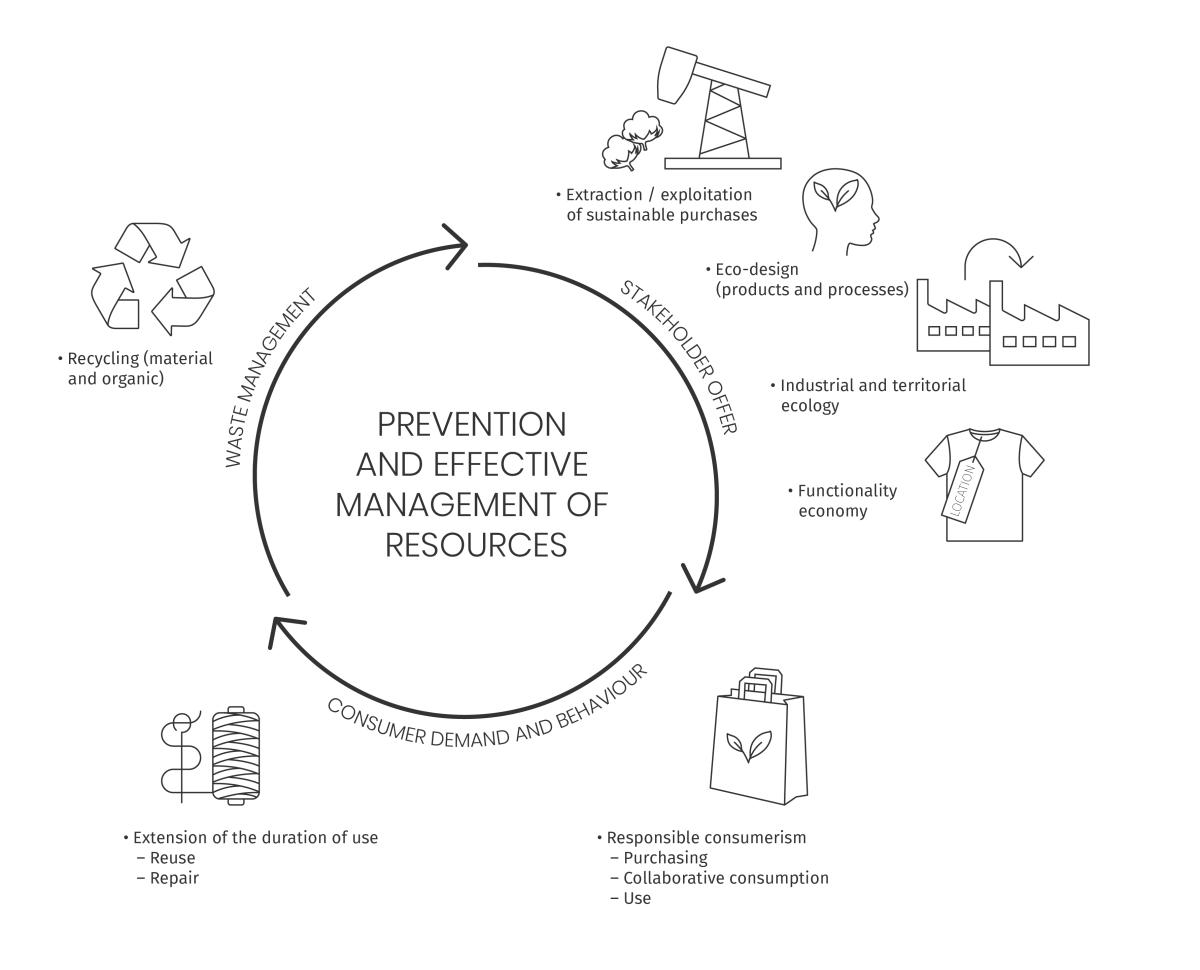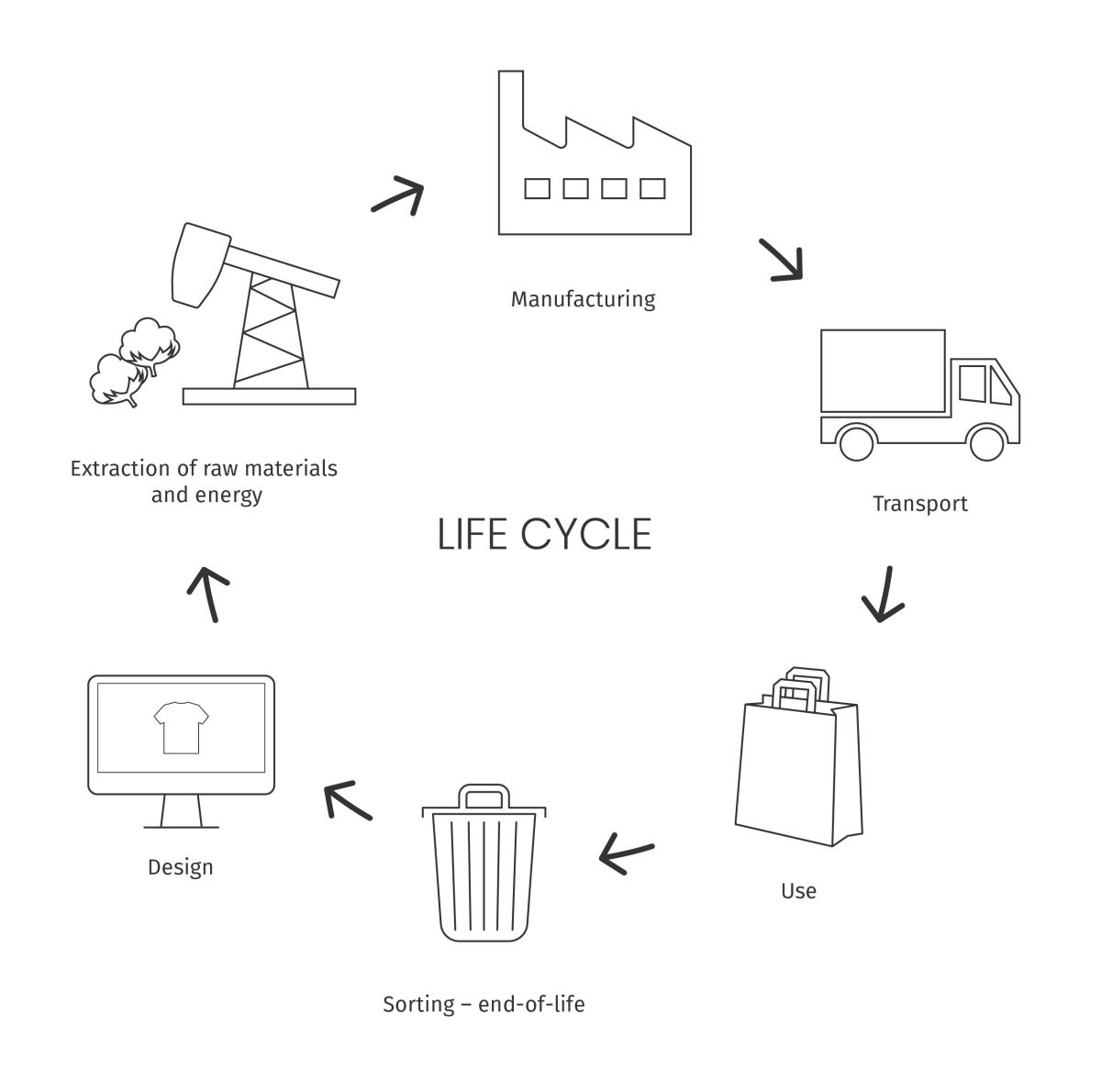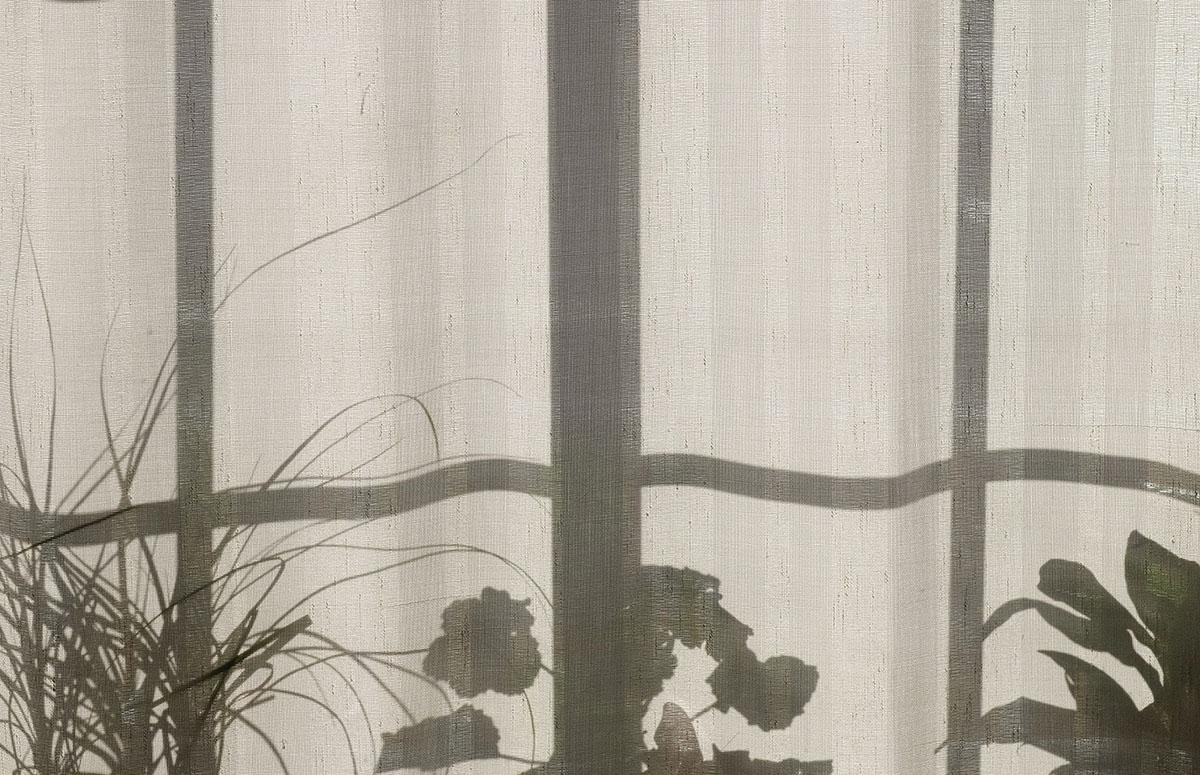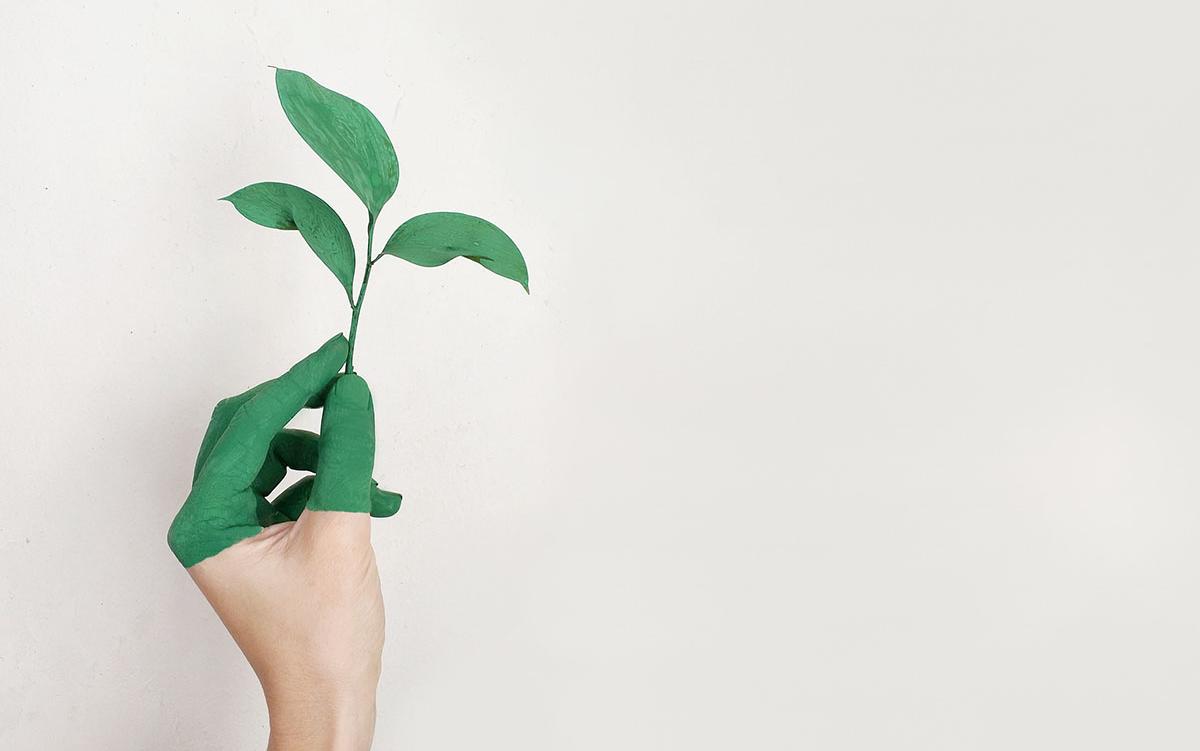To understand the notion of eco-design it is essential to situate the economic context it is a part of: the circular economy.
The current economic model - known as linear - which consists in extracting resources, transforming them into products or services, consuming them, then throwing them away, has reached its limits and is not sustainable over time. In the face of this observation, the circular economy is aiming to optimise resource management - materials and energy - in order to scale down raw materials consumption.
It's a model which takes account of three elements: production and the goods and services offer; demand and consumer behaviour; waste management. The circular economy is structured according to 7 pillars (set out in the diagram below), which include eco-design.
Numerous definitions of eco-design exist. According to the AFNOR (French Standardisation Association), eco-design consists in "integrating the environment from the very design of a product or service, and during all of the stages of its life cycle."
The ADEME (French Environment and Energy Management Agency) adds to this definition indicating that eco-design also has "the objective of reducing environmental impacts […] for an equivalent or superior service." The objective of an eco-design approach is effectively to reduce the environmental impact of the company whilst ensuring that the performance of its products and / or services is not degraded. The preferred tool when putting in place an eco-design initiative is the life cycle analysis.

Approaches to eco-design
The first approach ishe multi-stage or life cycle approach. Designers are invited to expand their vision and take account of all of the stages of the life cycle (from the extraction of materials through to end-of-life) in order to have a global vision of the stakes linked to the environment, quality, technical feasibility, costs.../span>
The second approach is the multi-criteria approach or an approach per environmental impact. Incoming flows (of material and energy) and outgoing flows (waste, by-products, atmospheric emissions, liquid effluents) must be identified throughout the life cycle in order to obtain a precise vision of their environmental impacts: energy, water, raw material consumption, waste production, discharges into the natural environment...
These two approaches lead to the notion of impact transfer, commonly termed a "false good idea". Consequently, when an environmental action is carried out at a particular stage of the life cycle, it is not excluded that negative effects are provoked at another stage. It is for this reason that a global vision of the life cycle and its impacts is necessary.

Eco-design levels
An eco-design approach can be broken down into four levels. Every level depends on the extent of the changes observed on the product (innovation), the time necessary for the approach and the eco-value gained (gain in terms of impacts and service provided).
- Level 1 : Take action at the level of materials and components.
- Level 2 : Take action on the product architecture.
- Level 3 : Make a technological leap, new functions, new uses.
- Level 4 : Change the business model..
Obviously, the first level is the most accessible, it's a balance which optimises the time spent, the changes made to the product and the estimated gain. The other levels constitute a veritable eco-innovation and imply a real modification to the product or service rendered.
INITIATE AN ECO-DESIGN APPROACH
To initiate an eco-design approach in your company, there are a few practices you can start to put in place :
-
Designate an eco-design referent who will be in charge of setting up the approach within the company and training the internal teams.
-
Define eco-design within the company's approach and business model.
-
Draft an eco-design strategy with SMART objectives : Specific, Measurable, Achievable, Relevant and Timed.
-
Develop an annual action plan to identify the actions to be implemented to meet the priority issues.
-
Start assessing the environmental impact of the brand's timeless products.
Why embark on an eco-design approach?
Initiating and developing an eco-design approach can be extremely beneficial for a company :
- competitive gains ;
- innovation factor ;
- risk reduction ;
- construction of immaterial assets ;
- better ethics ;
- consideration of strategic stakes.
These benefits can be expressed in both the short and the long term and can concern the company's internal and external stakeholders (suppliers, personnel, customers...).
These benefits can be expressed in both the short and the long term and can concern the company's internal and external stakeholders (suppliers, personnel, customers...). From these elements, a map of eco-design benefits is drawn up to permit companies to position their incentives and convictions. This map is available inLe Guide de l’éco-innovation de Hélène TEULON.

THE ECO-MODULATIONS
To encourage and reward the virtuous steps of eco-design, Refashion has implemented eco-modulations: a system of bonuses, per piece or per ton, for marketers of clothing textiles, household linen and footwear, based on several criteria:
Eco-modulation 1 - Durability
According to defined durability criteria
Eco-modulation 2 - Environmental labels
8 labels covered: Ecocert® Ecological & Recycled Textiles Standard (ERTS) - Level 2, Oeko-tex® Made in Green, Bluesign®, Fairtrade® Textile, European Ecolabel, Demeter®, GOTS and Bioré®
Eco-modulation 3 - Incorporation of recycled materials
- Raw materials from the recycling of post-consumer textiles and footwear
- Recycled raw materials from open loop recycling (excluding food grade plastic resin)
To learn more, visit our dedicated web page for eco-modulations.
